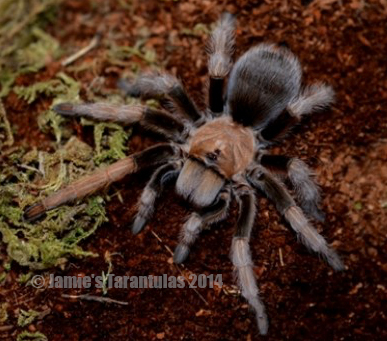Posts by Jamie

Aphonopelma hentzi (Texas Brown) Care Sheet
16/08/2021
The species is known for its longevity and hardiness. Often considered a docile species, I find they can sometimes be testy although bites are rare and not considered medically significant. The species is typically slower-moving which makes care, maintenance, rehousing and shipping much easier on the keeper.
Smaller slings like ...
Read more

Aphonopelma chalcodes (Arizona Blonde) Care Sheet
16/08/2021
Light blonde accents contrast dark legs for striking look. Aphonopelma chalcodes (Arizona Blonde) is one of the most popular beginner tarantulas for good reason.
The species is known for its attractive coloring, longevity, and hardiness. Often considered a docile species I find they can sometimes be testy although bites are ...
Read more

Aphonopelma bicoloratum (Mexican Blood Leg) Care Sheet
16/08/2021
This beautiful and unique New World is known for its docile and hardy nature. Often confused with Brachypelma boehmei due to similar markings, this Aphonopelma is quite different indeed.
Quite uncommon in the hobby the species is known for it's bright coloring, longevity, hardiness and docile nature. A. bicoloratum also ...
Read more

Harpactira pulchripes (Golden Blue Leg Baboon) Communal Part 1
21/07/2021
Although not known in the hobby as "communal" I have been experimenting with this group since mid-November 2019.
As this group seemed to exhibit communal behavior I kept them together out of curiosity. I could always separate them if there was an issue.
So a few weeks went by. I didn't ...
Read more

Harpactira pulchripes (Golden Blue Leg Baboon) Care Sheet
21/07/2021
Harpactira pulchripes is also known as the Golden Blue Leg Baboon, Blue and Gold Baboon, 24K Gold Baboon etc. This stunning South African native is well-known and sought in the hobby for its shimming gold and metallic blue coloring. The color of the above photo has not been altered in ...
Read more

Hapalopus sp. Colombia (Pumpkin Patch) & triseriatus comparison photos
20/01/2021
A customer recently asked me the difference. What a great excuse for a photo post dedicated to the little South American spiders with A LOT of personality!
Can you spot the differences? Hint: Look at the shape of the stripe on the carapace as well as the patterns on the ...
Read more




